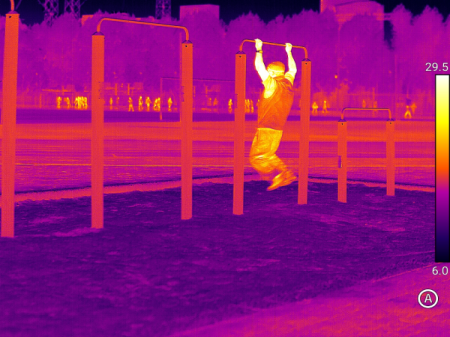Thermal conductivity plays a crucial role in infrared thermography (IRT), influencing how heat is transferred and detected across materials. Understanding this physical property is key for accurate thermal imaging, whether you're inspecting buildings, diagnosing medical conditions, or monitoring electrical systems.
What is Thermal Conductivity?
Thermal conductivity refers to a material's ability to conduct heat. It measures how well heat flows through a material when there's a temperature difference between its surfaces. Materials with high thermal conductivity, like metals, efficiently transfer heat, while those with low thermal conductivity, like wood and foam, are better insulators.
Materials with higher thermal conductivity (e.g., copper, aluminum) are ideal for applications requiring rapid heat transfer, whereas materials with lower thermal conductivity (e.g., concrete, plastic) help to retain heat or insulate against it.
How Does Thermal Conductivity Affect Infrared Thermography?
Infrared thermography detects infrared radiation emitted by objects to create thermal images. Thermal conductivity affects how heat is distributed and retained in materials, influencing how infrared thermography captures temperature patterns.
1. Heat Distribution:
High thermal conductivity materials, such as metals, quickly spread heat across their surface. This makes it easier for infrared cameras to detect consistent temperature readings.
Low thermal conductivity materials, like insulation, hold heat in localized areas, leading to uneven temperature patterns and making it harder to capture accurate thermal data.
2. Thermal Lag:
Materials with low thermal conductivity often exhibit a thermal lag, meaning they take longer to adjust to temperature changes. For example, insulated walls may not immediately show temperature shifts, making it challenging to detect heat loss or moisture behind them.
High thermal conductivity materials respond quickly to temperature changes, allowing infrared cameras to capture fast temperature variations, such as electrical hot spots or mechanical malfunctions.
3. Material Interfaces:
Interfaces between materials with different thermal conductivities (like metal and insulation) create distinct thermal gradients. These boundaries are easily detected by infrared thermography and help identify problems like heat leaks or moisture intrusion in buildings.
4. Heat Retention:
Materials with low thermal conductivity, such as foam insulation, trap heat more effectively. In infrared thermography, this can help highlight areas with heat retention but also may cause delayed detection of temperature changes.
5. Surface Conditions:
Rough surfaces tend to have lower thermal conductivity compared to smoother ones, which can influence how heat is transferred and reflected. This can cause variations in thermal images, especially when inspecting complex or textured surfaces.
How to Account for Thermal Conductivity in Infrared Thermography
- Calibrate Your Infrared Camera: Many modern infrared thermography systems allow you to input material types and their thermal conductivity to improve measurement accuracy.
- Allow Time for Temperature Stabilization: Surfaces with low thermal conductivity may require more time to stabilize after heat is applied, so plan accordingly when scanning.
- Use Multiple Scans: For materials with low thermal conductivity, multiple scans over time can help track heat distribution and detect slow temperature changes.
- Understand Material Differences: When working with composite materials, be aware of how different thermal conductivities can affect heat transfer and interpretation of thermal images.












